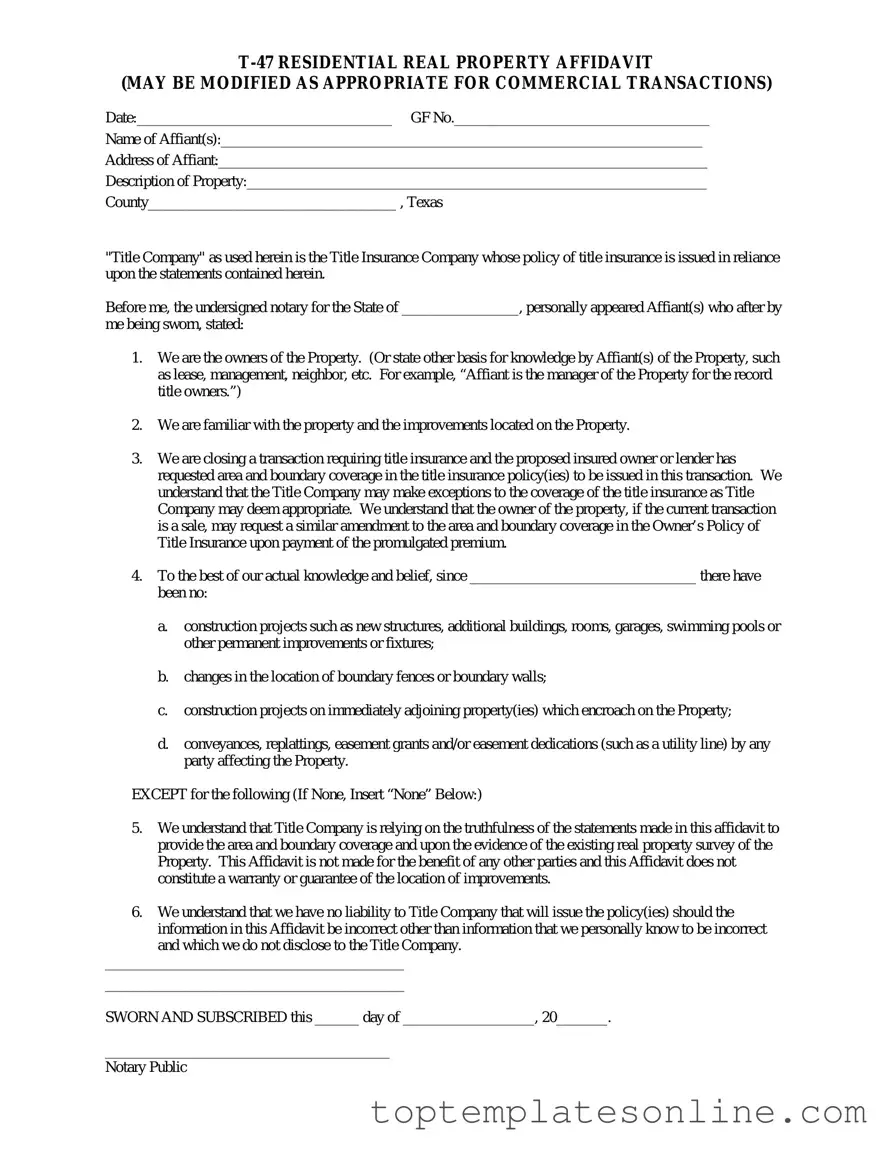Fillable Texas residential property affidavit T-47 Form
The Texas residential property affidavit T-47 form is a legal document used in real estate transactions to confirm the ownership and condition of a property. This affidavit serves to provide essential information to lenders and buyers, ensuring transparency in property dealings. Understanding its purpose and requirements is crucial for anyone involved in Texas real estate.
Customize Texas residential property affidavit T-47 Here
